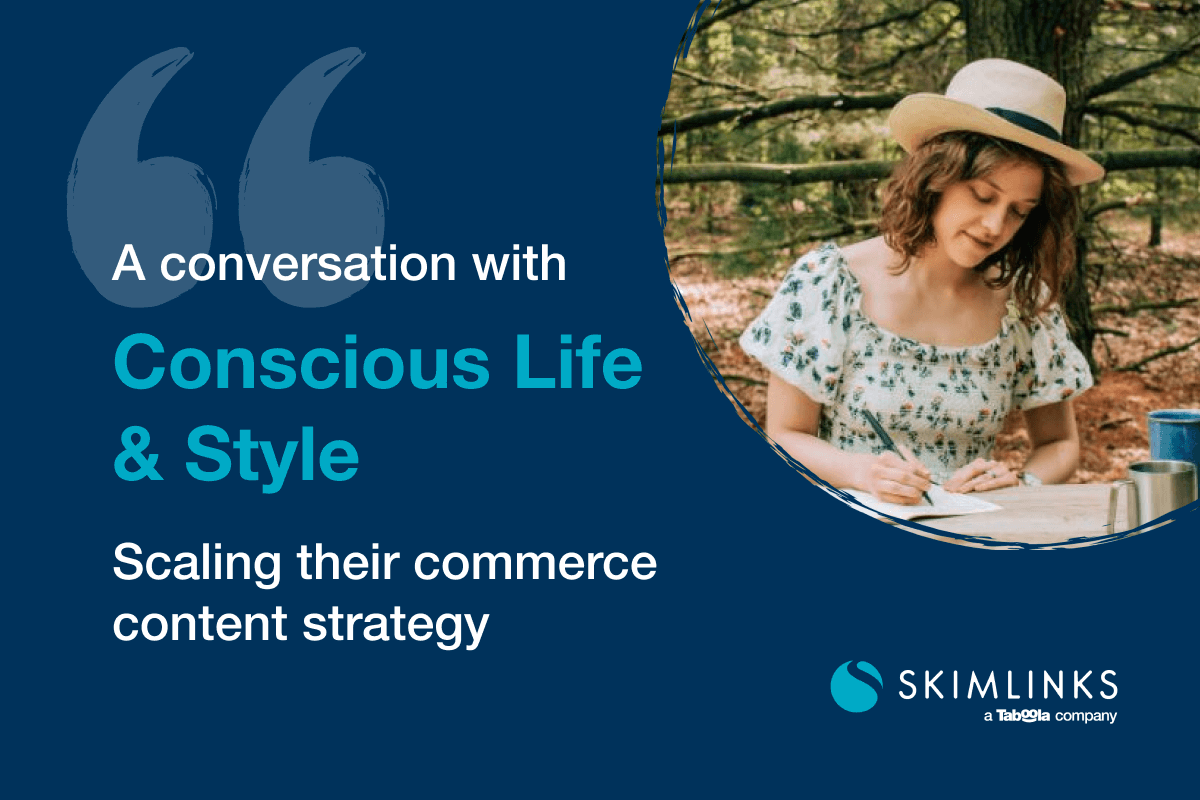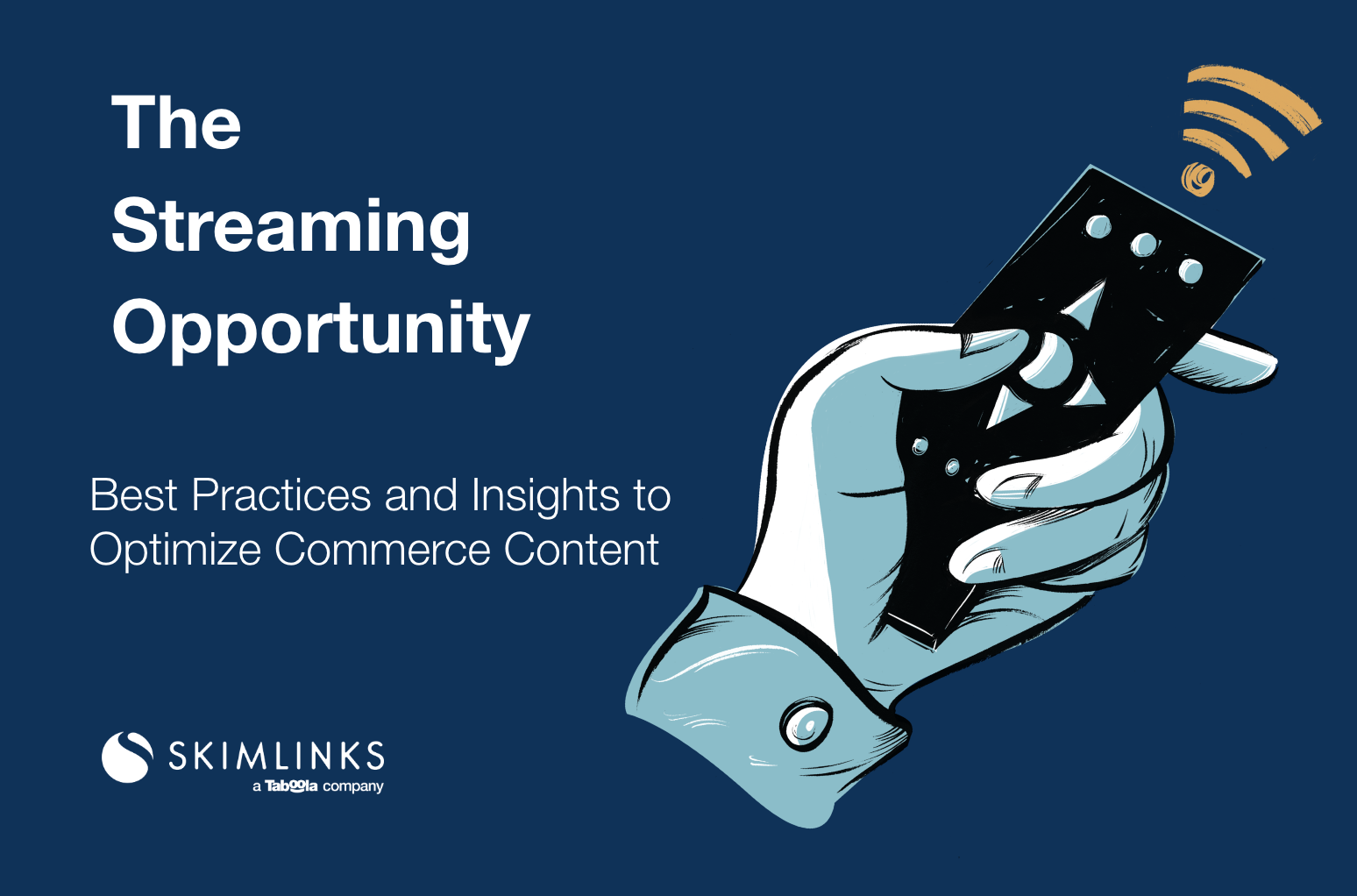How Conscious Life & Style scales their commerce content strategy
Posted 1 year ago by Tyra Brown

Featured on accredited websites such as The Good Trade, Fashion Takes Action and many more, Conscious Life & Style encapsulates all things sustainable and eco-friendly; with an ethos of mindful living in fashion, beauty, lifestyle and home decor.
Conscious Life & Style started as a personal hobby that quickly turned full-fledged business. We spoke to Elizabeth Joy, Founder, Editor & Podcaster, about the development of their commerce content strategy and scaling their revenue.
What does your commerce content strategy look like?
We’re a small independent platform, so we try to curate sustainable and conscious versions of shopping guides that are SEO optimised, with long-tail keywords such as “15 eco-friendly vegan shoes” or “10 non-toxic furniture brands”.
As for social media, we mostly use Pinterest to drive traffic to the main site to pages or shopping guides that feature affiliate links. We find it’s better to link to your own site on Pinterest because it is a better user experience as our website can curate the user journey. It’s been the most successful method for us.
We also use Instagram specifically for building trust, awareness and community building.
How has your strategy developed from when you first started affiliate marketing until now?
It’s expanded a lot from the beginning because it started out with just me, and now we have 3 additional writers. We also run a weekly podcast, (which includes show notes). We publish two articles per week, on average.
On the podcast, we link to the show notes. We optimised the show notes for search so if someone googles it, they’ll be able to find the podcast. By housing things on the website, we direct people to either the podcast or our website and show our audience the breadth of what we offer.
I also use the Editor Toolbar a lot more frequently. I would recommend to every Skimlinks Publisher to use it as it saves so much time. I was searching every brand on the Hub before.
We also look at the Skimlinks data to see which brands resonate best with our audience, and we move up brands in our guides based on that data, since we want to showcase brands that we think our audience will love and actually use.
What were you looking for in an affiliate marketing partner and why did you choose Skimlinks?
A colleague recommended it to me, but I chose to sign up because it made affiliate marketing easier as all merchants are housed under one umbrella. It’s easier to use Skimlinks than signing up for dozens (if not hundreds) of individual affiliate programs.
I also use the Editor Toolbar as it’s an easy plug-in-and-play extension. It cuts the work of having to go into the Publisher Hub every time. If we find a website with Skimlinks, it automatically tells us and we can just copy the affiliate link very easily.
Additionally, the reporting on Skimlinks is also fully comprehensive and easy to understand.
How do you decide which merchants to feature in your articles?
Our primary determining factor is a brand’s sustainability and ethics. We also look at quality (which we ascertain from customer reviews, materials, and/or personal experience).
We also consider aesthetics, an online store’s customer experience, and price point. While we don’t feature cheap throwaway products, we also tend not to feature luxury merchants, except for furniture merchants, as you can find well-made or vintage furniture that will last a lifetime (or several).
Sometimes, using Skimlinks, we will look to see what brand or products are getting the most clicks and the conversion rate to see what is popular amongst readers.
How have you seen blogs develop over the years? What direction do you see it going?
I think people are very much looking and searching for blogs. Even if someone is on social media first, it’s really important to have their own website as a home base for an audience to find everything in one space. It’s something you control and manage entirely.
However, with the emergence of AI, as well as preview snippets from search engines, traffic to pages may decrease as people can get answers without even clicking a link. So it’s important that you’re offering deeper value to your readers and giving them a reason to click through to your site.
Having a multimedia experience is definitely important now. More videos, pictures, and audio makes the user experience better. A trend I’ve been seeing in editorial publications, for the sake of accessibility, is an audio transcript of an article. There’s a lot of potential for that. It’s a win-win if you have the resources to manage that. We don’t have the capacity for that right now, but it’s something I’d love to do in the future.
How do you plan ahead for key shopping events?
We normally start planning about 6 months in advance for holidays such as Christmas. We publish our holiday gift guides 2-3 months in advance to capture early planners. For smaller key shopping events, like Mother’s Day, we post about a month and a half in advance.
Do you have any tips for anyone who wants to start affiliate marketing?
I would suggest creating a long-form core piece of content and building several other pieces of shorter-form and/or multimedia content around that. For example, you could create a blog post and then create Instagram posts, a podcast episode, a YouTube video, and several short-form videos based on that long-form content.
In terms of affiliate marketing, it is a long-term game. It’s good to have realistic expectations and pick something that you are passionate about because making revenue isn’t instant. It’s a journey so you need to love what you do as you might not make money for several months. It’s not a get-quick-rich scheme.
Consider your short-term and long-term goals and plan accordingly. Is it sustainable? In the sense of: is the rate that you’re creating content burning you out? Is your focus on virality helping you build a long-term commerce content strategy? Are the people you’re attracting the kind of audience that you want to serve for years to come?
These longer-term questions are important because you want to build something that in years, you will still love. I am grateful, for sure to have affiliate marketing (which Skimlinks is a key part of) to turn my passion into something I can also make a living from.
–
Thank you Elizabeth for sharing your passion with us. These are some tips that anyone in affiliate marketing or looking to get into it can adopt!
Also, If you would like to listen to Elizabeth’s podcast where she talks about what it will take to cultivate a more sustainable and equitable future for fashion, you can do so here!


